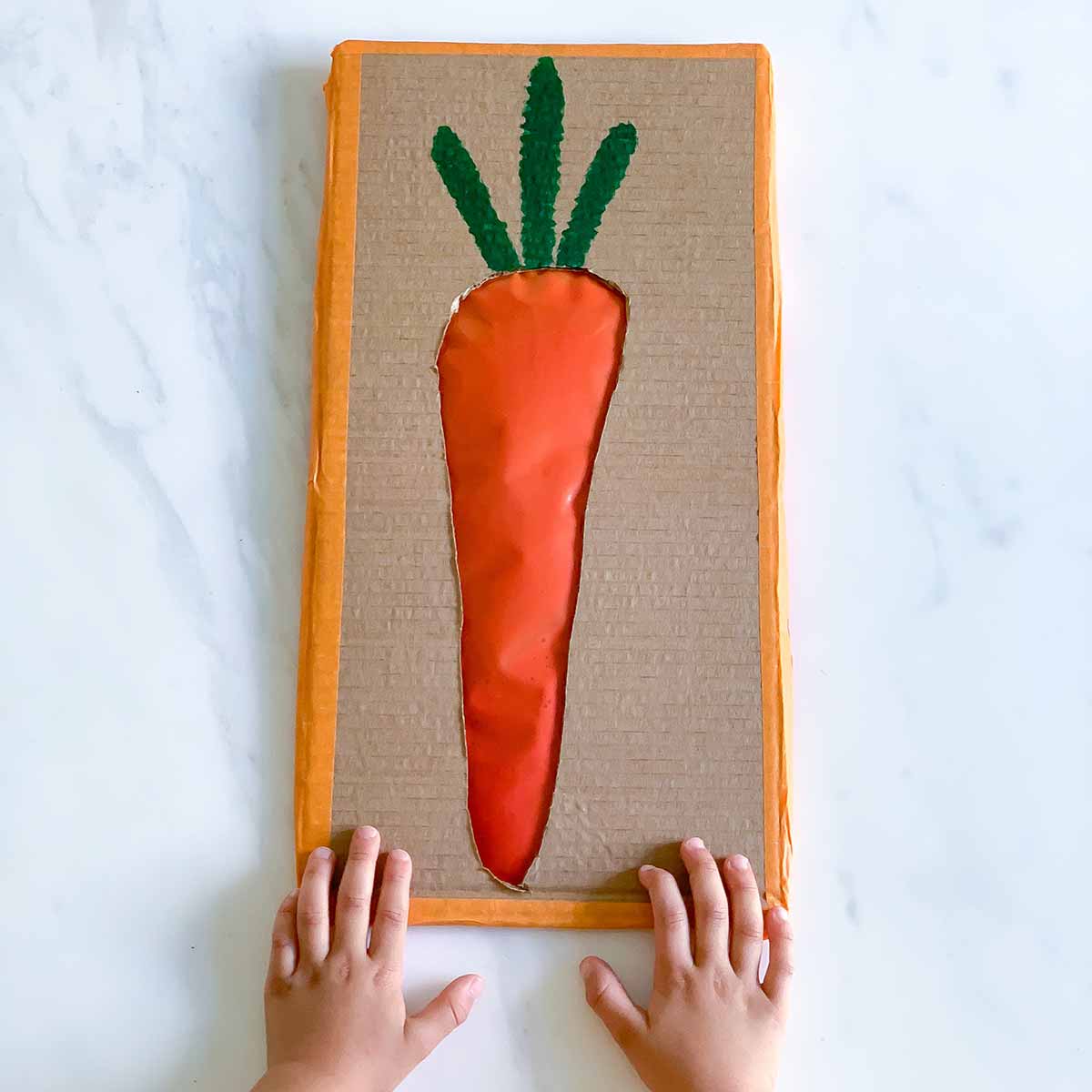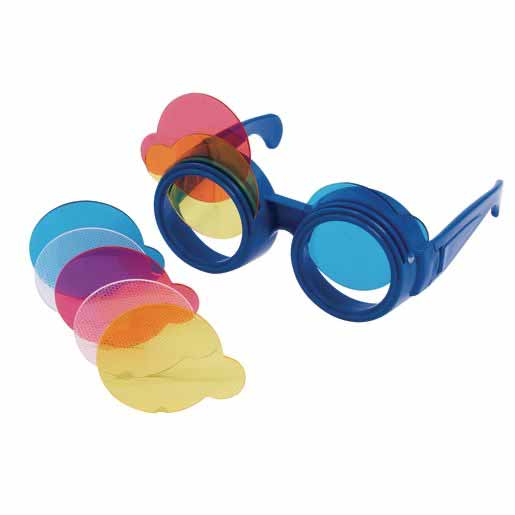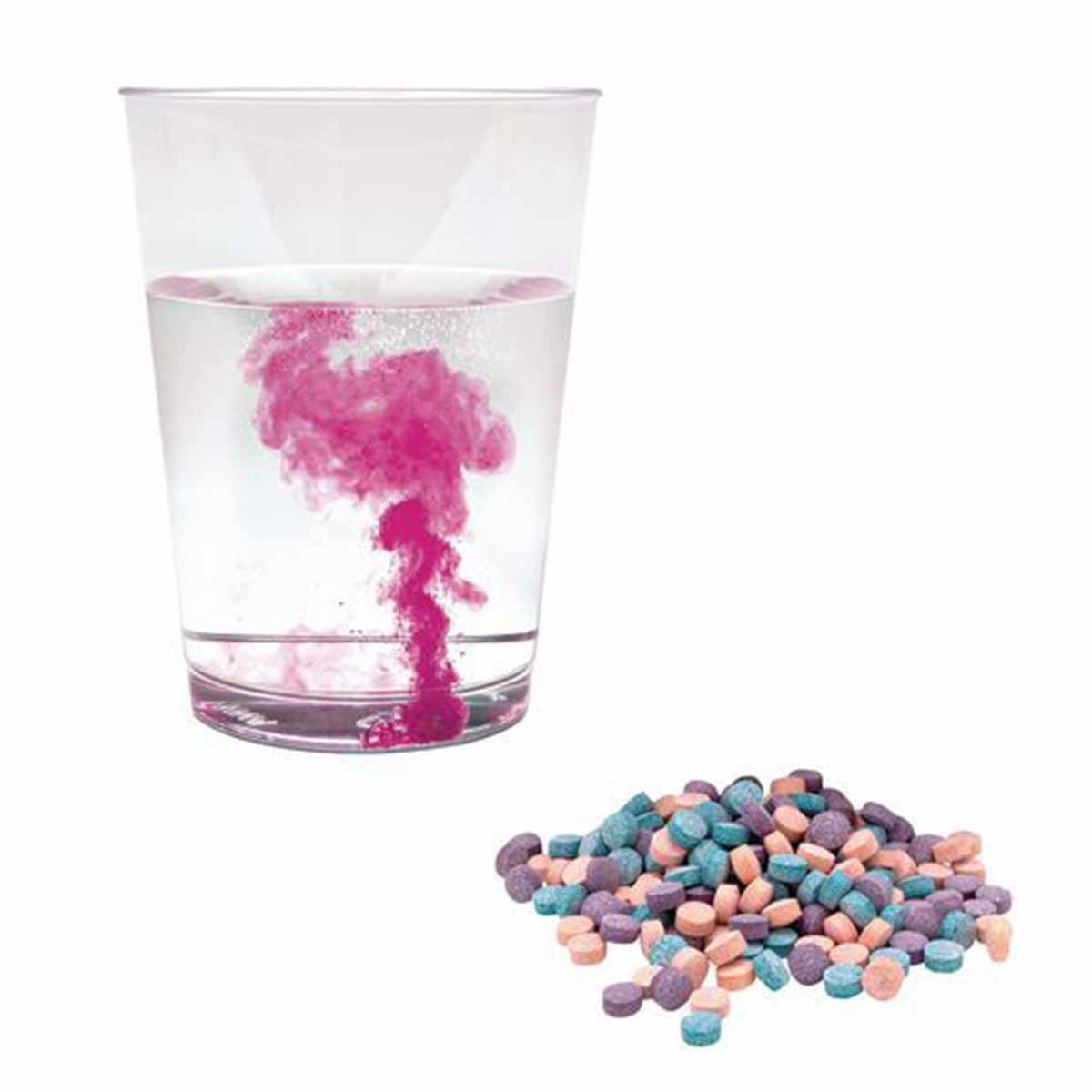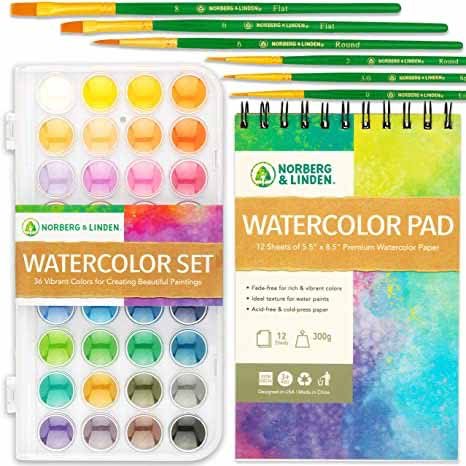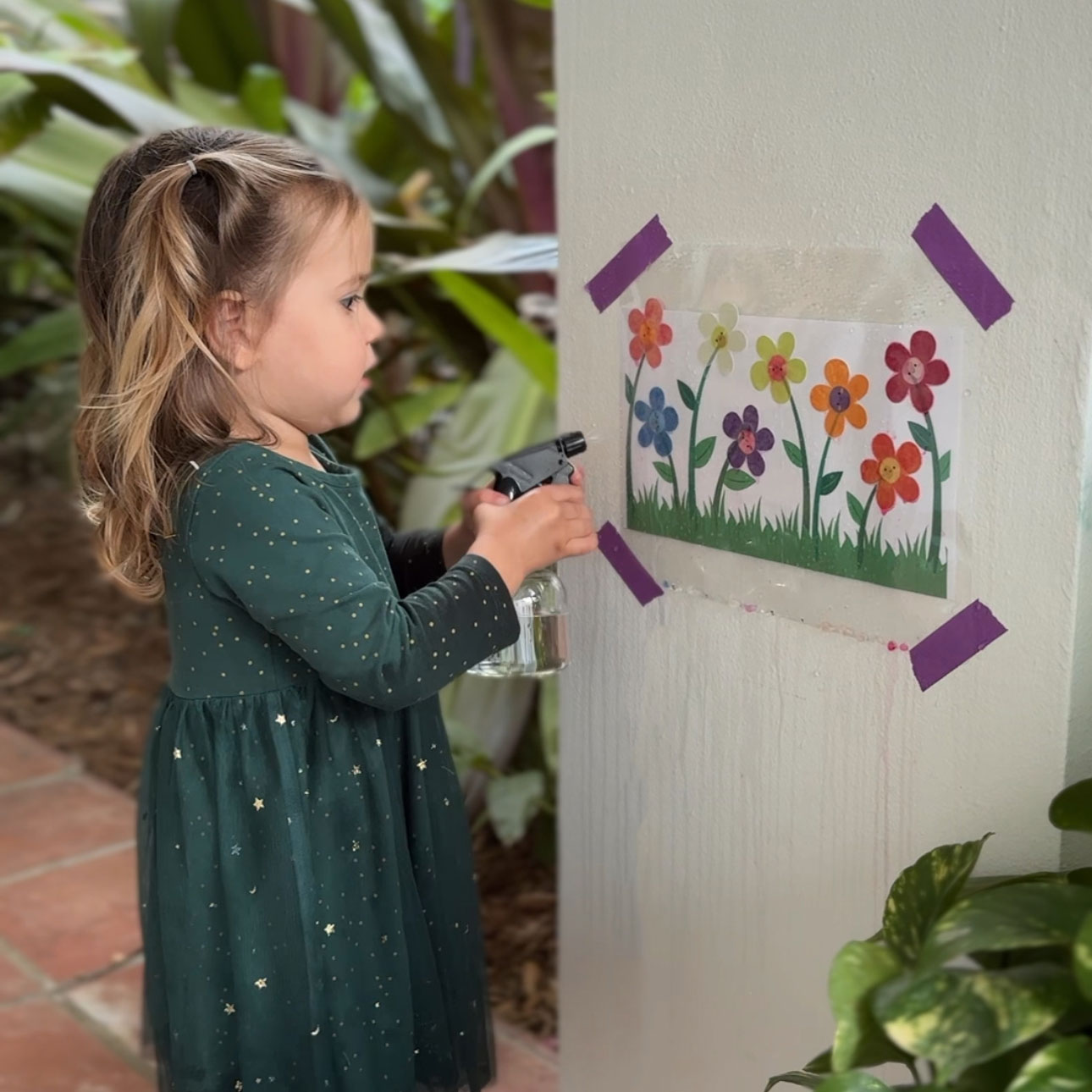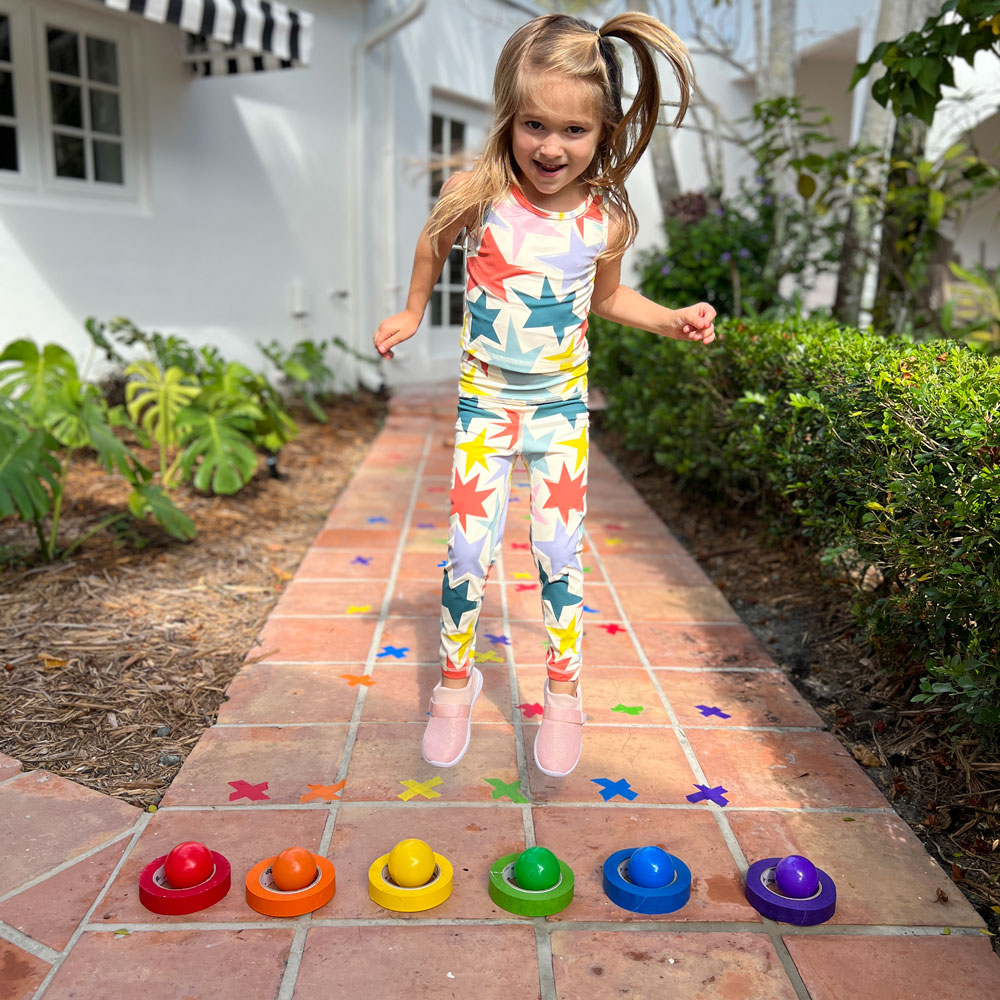Color Mixing Orange Activity: Make The Carrot
Your child will love this color mixing orange activity with yellow and red paint. Even better – there’s no mess as all the paint is contained within a plastic bag!
Few things are as wonderful as a mess-free educational activity. That’s exactly what this is. I’ll show you how easy it is to set up this simple project that teaches children the basics of primary and secondary colors.
This activity is super adaptable. Celebrating Halloween or Thanksgiving? Make a pumpkin! Celebrating Valentine’s Day? Combine white and red to make a pink heart! Is Spring in the air? Combine blue and red to make a purple flower. The options are endless!
All activities should be supervised by an adult. As an Amazon Associate I earn from qualifying purchases. This post may contain affiliate links.
What Are Primary and Secondary Colors and Color Mixing?
The primary colors are red, yellow, and blue. These are the three main colors from which you can create a rainbow of other colors.
Secondary colors are any shades that are created after mixing primary colors together.
This educational activity lets your kids mix two primary colors to create a secondary color.
When your child mixes the yellow and red with their own fingers, they experience color mixing orange. They actually see how the yellow and red turn to bright orange when they combine.
There are other ways you can teach color mixing orange – but this is a mess-free way to mix paint colors together. It’s also a really fun sensory activity without the wet globs of paint spreading all over the table.
Watch the Video to See the Color Mixing Carrot in Action!
Your child is going to really enjoy this activity. Watch this super-short clip to see the color mixing game in action. You can see the paint mix together and watch the red and yellow slowly become orange.
You probably already have these supplies in your house. Read on below for how to make your own color mixing orange project. You don’t need any special art skills either – it’s so easy!
Watch the Video to See the Orange Color Mixing Activity in Action!
Your child is going to really enjoy this activity. Watch this super-short clip to see the color mixing game in action. You can see the paint mix together and watch the red and yellow slowly become orange.
You probably already have these supplies in your house. Read on below for how to make your own color mixing orange project. You don’t need any special art skills either – it’s so easy!
Materials
- 2 identical pieces of cardboard
- 1 gallon-size plastic bag
- Red and yellow paint
- 2 identical pieces of cardboard
- 1 gallon-size plastic bag
- Red and yellow paint
- Green paint or paint stick
- Tape
- Craft Knife
Step-by-Step Instructions
Step 1
On one piece of cardboard, trace the outline of a carrot and then use a sharp knife to cut out the carrot shape.
Step 2
Use green paint or a paint stick to give the stem some color!
Step 3
In a freezer-type plastic bag, put the yellow and red paints on separate parts of the bag to avoid mixing. If you want to remove the white label on the plastic bag all you need to do is rub it off with an alcohol swab or a cotton swab soaked in nail polish.
Step 4
Close the bag while removing the air bubbles.
Step 5
Tape the top of the bag to ensure it doesn’t leak.
Step 6
Sandwich the plastic bag between the two pieces of cardboard.
Step 7
Tape the plastic bag down to the cardboard (to avoid it moving around while your child is mixing the colors), and then tape the cardboard pieces to hold everything together.
Step 1
On one piece of cardboard, trace the outline of a carrot and then use a sharp knife to cut out the carrot shape.
Step 2
Use green paint or a paint stick to give the stem some color!
Step 3
In a freezer-type plastic bag, put the yellow and red paints on separate parts of the bag to avoid mixing. If you want to remove the white label on the plastic bag all you need to do is rub it off with an alcohol swab or a cotton swab soaked in nail polish.
Step 4
Close the bag while removing the air bubbles.
Step 5
Tape the top of the bag to ensure it doesn’t leak.
Step 6
Sandwich the plastic bag between the two pieces of cardboard.
Step 7
Tape the plastic bag down to the cardboard (to avoid it moving around while your child is mixing the colors), and then tape the cardboard pieces to hold everything together.
Educational Benefits of Color Mixing
This activity teaches both art and science. It’s a STEAM activity that marries science with art.
The science behind color mixing is all about teaching the basics of the scientific method in a fun way. Ask a question, form a hypothesis, experiment, observe, and create a conclusion.
Before you begin this activity, ask your child, “what will happen when you mix yellow and red?” Let them guess and then they get to test their theory.
This activity sparks an interest in colors and creativity too. What other colors combine to make more shades and hues?
Educational Benefits of Color Mixing
This activity teaches both art and science. It’s a STEAM activity that marries science with art.
The science behind color mixing is all about teaching the basics of the scientific method in a fun way. Ask a question, form a hypothesis, experiment, observe, and create a conclusion.
Before you begin this activity, ask your child, “what will happen when you mix yellow and red?” Let them guess and then they get to test their theory.
This activity sparks an interest in colors and creativity too. What other colors combine to make more shades and hues?
Store-Bought Color Mixing Toys
Here are my top picks for store-bought items that teach color mixing for kids!
Layer colored lenses in the plastic glasses to see different shades of colors all around you!
Steve Spangler Science Color Fizzers
This set of 100 tablets comes in primary colors. You can mix the colored water to create different colors.
This great kit includes a mini mixing tray, color mixing tablets, and pipettes for creating an amazing splash of colors!
This set includes paint, brushes, and paper. Watercolors are a classic way to watch colors mix and create new shades.
What’s Next?
Flower Activity for Preschoolers with Free Printable!
This flower activity is a fun way to learn about how flowers bloom while also strengthening fine motor skills while using a spray bottle!
The Best Fun Outdoor Toys for Kids in 2024
Explore fun outdoor toys for kids in 2024! From sandboxes to water toys, bikes, games, and more. Keep your kids entertained all year long!
Gross Motor Skills for Preschoolers – Your Ultimate Guide
This is your ultimate guide to understanding gross motor skills for preschoolers including activity ideas and product suggestions!



